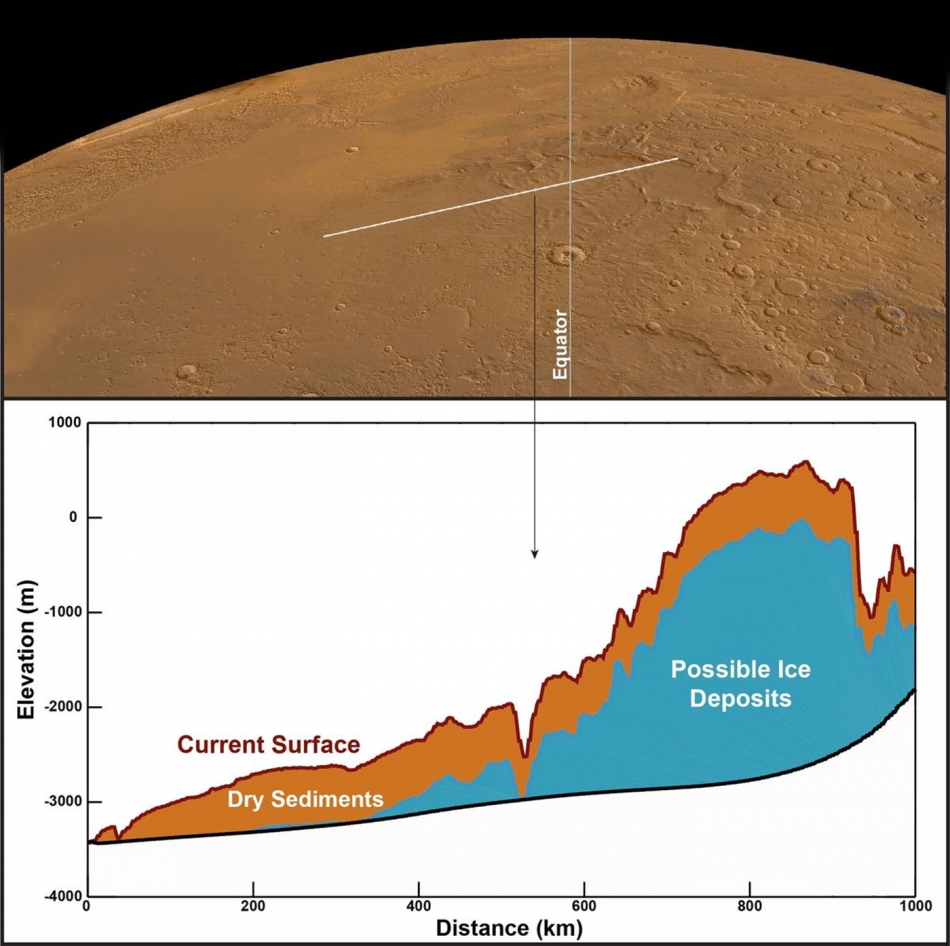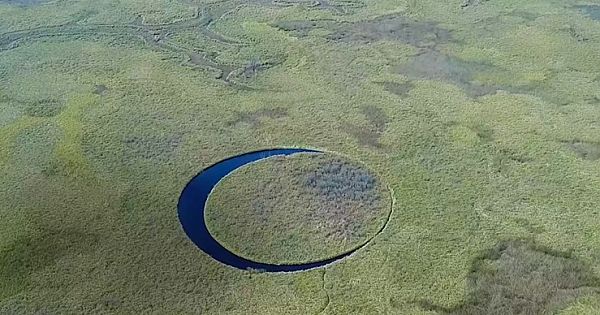Huge Water Ice Deposits At Mars Equator Has Discovered By ESA Orbiter
The European Space Agency – ESA orbiter has found enough water to cover Mars in an ocean between 4.9 and 8.9 feet (1.5 and 2.7 meters) deep, buried in the form of dusty ice beneath the planet's equator. This is an amazing discovery, which could improve future prospects for human Mars settlement.
In this image, the white line on Mars' surface (top) shows a stretch of land that was scanned by MARSIS. The graph below shows the shape of the land and the structure of the subsurface, with the layer of dry sediments (likely dust or volcanic ash) in brown and the layer of suspected ice-rich deposits in blue. The graph shows that the ice deposit is thousands of meters high and hundreds of kilometers wide. More pertinent is the question of how the water ice ended up buried at the equator. Sub-surface ice has been found in plentiful quantities on Mars before; NASA's Phoenix mission dug up ice just beneath the dusty surface at the lander's polar landing site in 2008. Meanwhile, early in its mission, Mars Express detected abundant water-ice extending down into the mid-latitudes, and NASA's Mars Odyssey even found clues to the presence of water in the MMF in 2009. More recently, ESA's Trace Gas Orbiter detected hydrogen from water ice just beneath the surface of Candor Chaos, which is a segment of the immense rip in the surface of Mars that we call Vallis Marineris. Additionally, the remains of ancient glaciers, called relict glaciers, have been spotted in Eastern Noctis Labyrinthus, which is just 7.3 degrees south of the equator. The presence of subsurface water-ice at low and equatorial latitudes hints at how Mars' climate was very different in the distant past. "This latest analysis challenges our understanding of the MFF and raises as many questions as answers," said Colin Wilson, who is an ESA Project Scientist for Mars Express and the Trace Gas Orbiter, in the statement. "How long did these ice deposits form, and what was Mars like at the time?" The ice's existence could be the result of Mars' wandering axis. Across the Red Planet's history, the axial tilt of the planet's poles is understood to have varied quite chaotically. Currently Mars' poles are tilted to the ecliptic by 25 degrees (compared to Earth, which has a tilt of 23 degrees) but in the past this could have ranged from as shallow an angle as 10 degrees, to as extreme an angle as 60 degrees. During the periods of high obliquity, when the poles are pointing closer to the sun than the equator, water-ice could form in large quantities on the surface at the equator. That ice could then be buried by ash and dust falls, to remain covered to this day. The changing obliquity could also explain 400,000-year-old features discovered on Mars by the Chinese Zhurong rover, as well as the existence of gullies formed by liquid water where no such water should have existed. The new discovery is described in a paper published in Geophysical Research Letters. (Image credit: CReSIS/KU/Smithsonian Institution)




